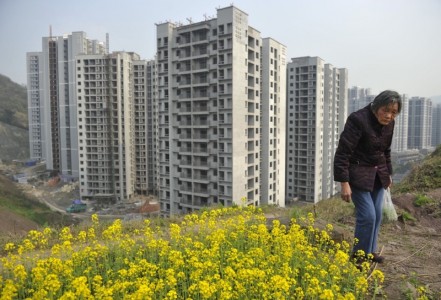 China’s home ownership jumped to 70 percent in 2010 from just 20 percent in 1980, thanks to rapid urban growth. But China’s lower class has been largely excluded from this housing boom, forced out by astronomical prices, according to a new Paulson Policy Memorandum by SUNY’s Youqin Huang. While the government is trying to rectify the situation—via a 2010 law that changed the priorities of housing policy from stimulating economic growth to achieving social goals—there is still a long way to go. A quick take:
China’s home ownership jumped to 70 percent in 2010 from just 20 percent in 1980, thanks to rapid urban growth. But China’s lower class has been largely excluded from this housing boom, forced out by astronomical prices, according to a new Paulson Policy Memorandum by SUNY’s Youqin Huang. While the government is trying to rectify the situation—via a 2010 law that changed the priorities of housing policy from stimulating economic growth to achieving social goals—there is still a long way to go. A quick take:
- Provision of low-income housing is still relatively low. With China’s urban housing prices at record highs, developers prefer building higher-yielding market rate housing. This is no surprise, as developers are only allowed a 3% profit margin when building government-subsidized housing.
- Government is now requiring developers to build low-income housing. In a bid to address shortages, local governments have started requiring developers to build low-income housing as part of regular commodity housing developments. In this sense, local governments are using their monopoly of land supply to channel private investment into low-income housing development.
- When low-end housing does get built, it is often in marginalized locations. Even under the inclusionary housing model, low-income housing is often built on the fringes of a city, leading to transportation challenges, limited access to opportunities, and poor social integration for China’s urban poor. Partly for these reasons, many eligible citizens have waived their rights to subsidized housing, resulting in low occupancy rates.
- China’s migrant class is largely excluded from urban housing. Despite government mandates, few migrants end up actually living in inclusionary housing, primarily due to China’s restrictive hukou system. According to Huang, only 118 of Beijing’s seven million long-term migrants have moved into public rental housing.
- Inclusionary housing only really benefits the government. According to Huang, inclusionary housing in its current form benefits central and local governments at the expense of both developers and residents. Governments derive political benefits from declaring progress on ambitious low-income housing targets, while developers are forced to risk brand equity and residents suffer from poor access to public services and job opportunities.


